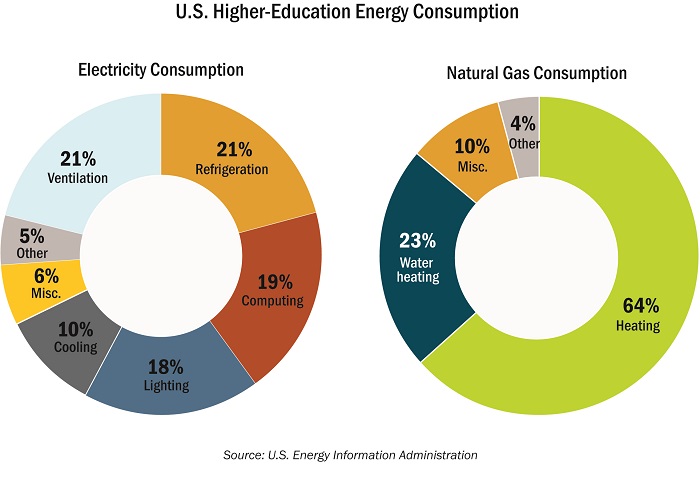Overview
Colleges and universities in the United States spend more than $100,000 per building in annual energy costs (based on an average building size of 50,000 ft²) (Business Energy Advisor, 2020).
Work with FOCUS ON ENERGY® to secure financial incentives for equipment upgrades delivering measurable energy savings. Focus on Energy’s team of dedicated Energy Advisors are here to help you understand your energy-intensive facilities so you can maximize their energy-saving potential.
Higher Education Kit Challenge
Looking for an eco-friendly solution for your off-campus housing needs? Check out the ultimate college care package from FOCUS ON ENERGY®. Choose from a wide variety of packs that include energy-efficient LEDs, showerheads, and more to help reduce energy waste and save money on your utility bills!
Understanding energy usage
According to the U.S. Energy Information Administration, more than half of the electricity used in higher-education facilities go toward ventilation, computer equipment, and lighting. Space heating accounts for more than 60% of natural gas usage. Identify where your buildings can save today by benchmarking your buildings and committing to an energy management plan.

Get started today
- Consult your Energy Advisor for Schools and Government Equipment Upgrades [PDF]
- Work with a Focus on Energy registered Trade Ally contractor. Trade Allies are committed to saving energy and helping your business thrive.
- Review the Energy Efficiency Best Practices Guide for Schools & Government Facilities [PDF] to identify ways to save energy, along with a list of Resources for School & Government Facilities [PDF]
- Enroll in the Strategic Energy Management [PDF] offering for a long-term approach to managing your facility’s energy.
- Determine if your project qualifies for prescriptive or custom incentives by reviewing:
- Begin your energy management journey. Download the Energy Team Toolkit for the resources you need to start an energy team at your facility.
- View the Laboratory Energy Efficiency Guide to identify ways to modify or replace laboratory hoods.